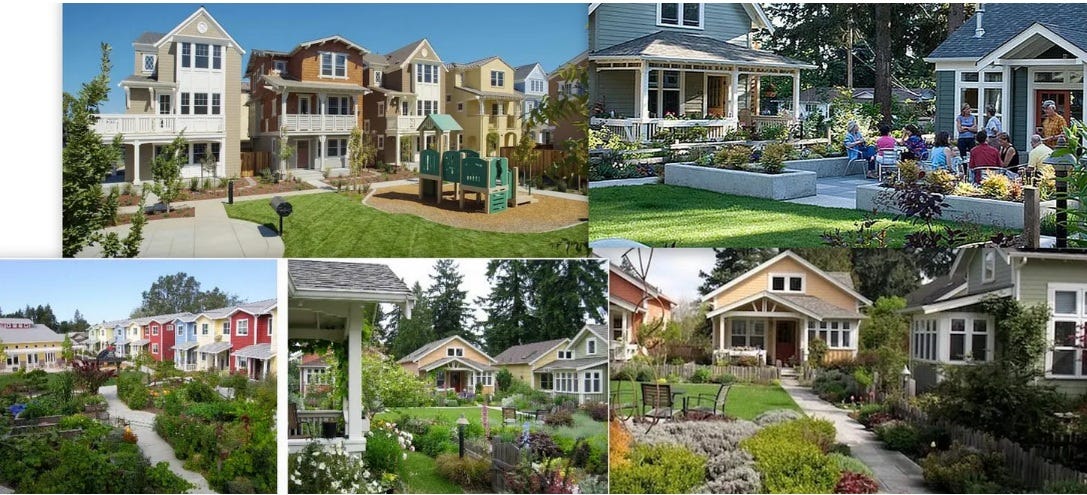The Fairness of Making New Development Behave Itself
[A version of the following was first published in April 1998]
In 1998, there was a great deal of community discussion about a proposed 480-acre “sprawl” development in western Alachua County, Florida.
I found many of the comments peculiar.
Often, in response to a proposal to get residential development or travel by car to “behave” itself, we hear people make the red herring argument that we should not force people to live in a walkable town center of the city, or that we cannot “get rid of all cars.”
In my view, however, the proposals to obligate residential development to behave itself, or for transportation to provide something more than a narrow focus on enabling car travel, is simply a way to create more fairness and provide more choices for both residential development and travel.
For about 60 years, we have built little other than low-density, single-use, large lot residential (“conventional”) subdivisions in outlying suburban areas. In addition, we have focused almost all of our transportation efforts on making cars happy. The result, of course, is that throughout America, and including Alachua County, we have little choice in terms of lifestyle or form of travel. We are pretty much “forced” to live in conventional residences in outlying areas, or travel by car for all our trips.
But what about the large and growing number of us who would enjoy the pleasures of a more walkable lifestyle, where we would have easy access to a nearby grocery, various forms of culture, a pleasant public realm, civic events, retail, jobs, schools, parks, sidewalks that lead somewhere, sociable neighbors, and calmed traffic? What about those of us who want the choice to be able to walk, bicycle, or bus to those destinations? Do many of us have a choice to enjoy such things? Do we really “force” people to live in more traditional town center settings, or get rid of their car, if we simply make other residential and travel choices more of an option?
As for “behaving,” it is my opinion that residential areas are “misbehaving” when they, for example, generate a large number of car trips. Such areas tend to be “single-use” (only single-family residential land use), and nearly every trip is too far to travel except by car. The result is that instead of a reasonably self-contained subdivision with a reasonable amount of internalized “trip capture” (due largely to a mix of land uses in the area or development), those trips and costs are externalized on all the rest of us.
Let’s not forget that the reasonable travel distance by car extends out to about 10 miles (it is roughly 3 miles for bus and bicycle, and about one-quarter mile by foot). What are the “externalized” costs that we must bear when a new subdivision does not “capture” a large number of car trips?
Well, within a 10-mile radius (see above), our neighborhoods get more traffic, more air pollution, more water pollution, more noise pollution, more strip commercial development, more decline in neighborhood value, more loss of small business in the core area, more sign pollution, more danger on our streets, and higher taxes to pay for public services like parks, schools, police, fire protection, sewer, water, environmental protection, etc.
“Car only” development design produces tax revenue that comes no where near paying for the public services it needs. Which means, in part, a never-ending increase in taxes paid by existing residents.
So it becomes a matter of fairness.
Is it fair for a new, outlying residential area to impose those costs on us? Isn't it reasonable to ask that new residential development “pay its own way,” by locating in appropriate areas, designing for livability, and paying for some of the costs for new or expanded public facilities and services they demand from us?
I recommend that we try to steer clear of red herrings. It tends to polarize us. I also believe we can all agree that providing residential and travel choices, and insisting on fairness, are good things.
To me, the debate should center around what constitutes fairness, and how much our local, state, and federal government should put into creating travel choices.



